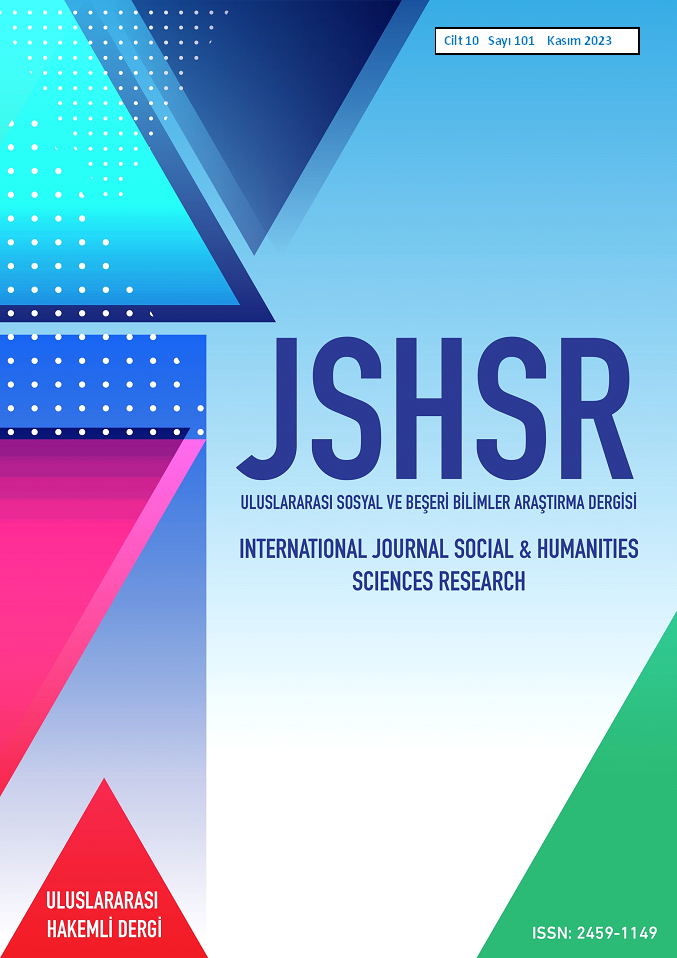Big Tax Data and Creation of Big Data Suitable for Tax Privacy
DOI:
https://doi.org/10.5281/zenodo.10253449Keywords:
Big Data, Artificial Intelligence, Digitalization, Big Tax Data, Tax PrivacyAbstract
Today, digital transformation applications have gained momentum with developing technology. Digitalization in public services enables services to be carried out faster and at less cost. However, digitalization creates an enormous data density. This data, consisting of high volume and various information assets, is called big data. Depending on its scope and area of use, big data can be created as legal big data or, as a more specific example, big tax data. By analyzing big tax data through artificial intelligence applications with advanced decision-making capabilities, it becomes possible to carry out faster and more accurate transactions with less cost in both taxation transactions and tax jurisdictions. However, in this case, the need to ensure data security and tax privacy arises. As a matter of fact, big tax data includes all kinds of personal information of taxpayers and other relevant persons.
In the study, firstly, the concept of big data is explained. Then, the concepts of legal big data and big tax data are mentioned. Subsequently, tax privacy regulations in Turkish tax law were examined and their scope was determined. With this determination, the constraints that may be encountered in the process of creating data suitable for tax privacy in big tax data, the purpose and scope of use of big tax data, and possible privacy violations have been tried to be determined. In this context, the constraints that need to be eliminated in creating big tax data have been determined as access to data and ensuring data security. The purpose and scope of use of big tax data may differ depending on the fulfillment of tax duties for the taxpayer, the execution of taxation procedures for the tax administration and the conduct of judicial activities for the tax judiciary. Privacy violations that may occur in the use of large tax data have been determined as collecting irrelevant data that exceeds the purpose of use, failure to ensure data security, unauthorized use and failure to destroy the data at the end of its usage period.
References
Abreu, A. & Acker, A. (2013, Şubat 12-15). Context and Collection: A Research Agenda for Small Data. iConference Proceedings içinde (s. 549-554). Fort Worth.
Aggarwal, S. (2023). Machine Learning Algorithms, Perspectives and Real-World Application: Empirical Evidence from United States Trade Data. Munich Personal RePEC Archive. https://mpra.ub.uni-muenchen.de/116579/
Atalay, M. & Çelik, E. (2017). Büyük Veri Analizinde Yapay Zekâ ve Makine Öğrenmesi Uygulamaları. Mehmet Akif Ersoy Üniversitesi Sosyal Bilimler Enstitüsü Dergisi, 9(22), 155-172.
Aydoğdu, Y. (2023). Hukuk Devletinin Dijital Çağdaki Görünümü (Riskler, Önlemler ve Bir Öneri Olarak Robot Yargıçlar). Seçkin Yayıncılık.
Bozdoğanoğlu, B. (2023). Yapay Zekâ ChatGPT’nin Vergi Sistemlerinde Kullanımı ve Uyuşmazlıkları Önlemedeki Rolünün Değerlendirilmesi. Mali Hukuk Dergisi, 19(224), 1545-1588.
Canbay, Y., Vural, Y. & Sağıroğlu, S. (2020). Mahremiyet Korumalı Büyük Veri Yayınlama İçin Kavramsal Model Önerileri. Politeknik Dergisi, 23(3), 785-798.
Chen, B. M., Stremitzer, A. & Tobia, K. (2022). Having Your Day in Robot Court. Harvard Journal of Law & Technology, 36(1), 127-169.
Cockfield, A. J. (2016). Big Data and Tax Haven Secrecy. Florida Tax Review, 18(8), 483-539.
Devins, C., Felin, T., Kauffman, S. & Koppl, R. (2017). The Law and Big Data. Cornell Journal of Law and Public Policy, 27(357), 357-413.
Diebold, F. X. (2019). On the Origin(s) and Development of Big Data: The Phenomenon, the Term, and the Discipline, PIER Working Paper. sas.upenn.edu/~fdiebold/papers/paper112/Diebold_Big_Data.pdf
Egeli, H. & Dağ, M. (2012). Türk Vergi Hukuku Açısından Mükellef Haklarının Değerlendirilmesi. Maliye Dergisi, 163, 130-146.
Eyüpoğlu, C., Aydın, M. A., Sertbaş, A., Zaim, A. H. & Öneş, O. (2017). Büyük Veride Kişi Mahremiyetinin Korunması. Bilişim Teknolojileri Dergisi, 10(2), 177-184.
Gültekin Varkonyi, G. (2022). Robot Yargıçlar. Seçkin Yayıncılık.
Gümüş, T. H. & Eyüpoğlu, C. (2022). Büyük Veride Anonimleştirme Teknikleri ve Saldırı Türleri: Uygulama Örnekleri. İstanbul Ticaret Üniversitesi Fen Bilimleri Dergisi, 21(42), 422-441.
Houser, K. & Sanders, D. (2018). The Use of Big Data Analytics by the IRS: What Tax Practitioners Need to Know. Journal of Taxation, 128(2), 1-15.
IRS. Privacy Impact Assessments, https://www.irs.gov/privacy-disclosure/privacy-impact-assessments-pia
Kayacan, Ş. & Baysal, D. (2023). Büyük Veride Mahremiyete Yönelik Etik Tartışmalara Göstergebilimsel Yaklaşım: The Entire History of You, Süleyman Demirel Üniversitesi Sosyal Bilimler Enstitüsü Dergisi, 1(45), 189-235.
Laney, D. (2001). 3D Data Management: Controlling Data Volume, Velocity, and Variety, Meta Group, Application Delivery Strategies. https://studylib.net/doc/8647594/3d-data-management--controlling-data-volume--velocity--an.
Moorthy, J., Lahiri, R., Biswas, N., Sanyal, D., Ranjan, J., Nanath, K. & Ghosh, P. (2015). Big Data and Consumer Privacy. Colloquium, 40(1), 74-96.
OECD. (2020). Tax Administration 3.0: The Digital Transformation of Tax Administration. https://www.oecd.org/ctp/administration/tax-administration-3-0-the-digital-transformation-of-tax-administration.htm
OECD. Forum of Tax Managment, https://www.oecd.org/tax/forum-on-tax-administration/tax-technology-tools-and-digital-solutions/data-management.htm
Schwieger, D. & Ladwig, C. (2016). Protecting Privacy in Big Data: A Layered Approach for Curriculum Integration. Information Systems Education Journal, 14(3), 45-54.
Sourdin, T. (2018). Judge v Robot? Artificial Intelligence and Judicial Decision-Making. UNSW Law Journal, 41(4), 1114-1133.
Taş, F. (2008). Vergi Mahremiyetinin İhlali Suçu. Yaklaşım Yayıncılık.
Uladi, A. İ. & Arı, E. S. (2023). Büyük Veri, Büyük Veri Analizi ve Uygulama Alanları. Yönetim Bilişim Sistemleri Dergisi, 9(1), 1-14.
Yaltı, B. (2006). Vergi Yükümlüsünün Hakları. Beta.
Zandoli, R. (2013). Big Data Privacy. Workshop Report, MIT Big Data Initiative, 14-15.
Downloads
Published
How to Cite
Issue
Section
License
Copyright (c) 2023 INTERNATIONAL JOURNAL OF SOCIAL HUMANITIES SCIENCES RESEARCH

This work is licensed under a Creative Commons Attribution 4.0 International License.


